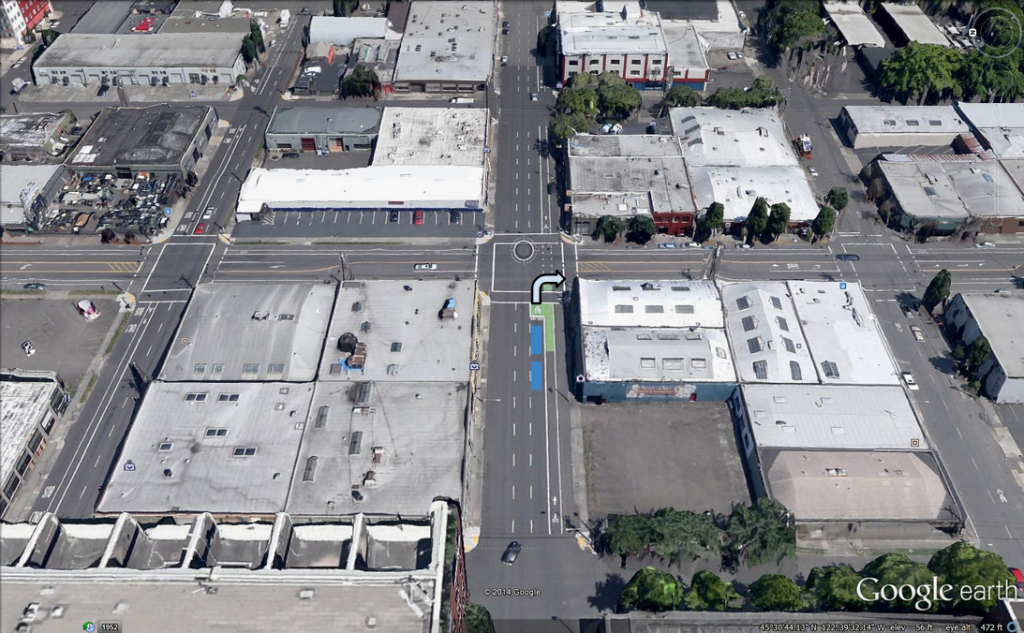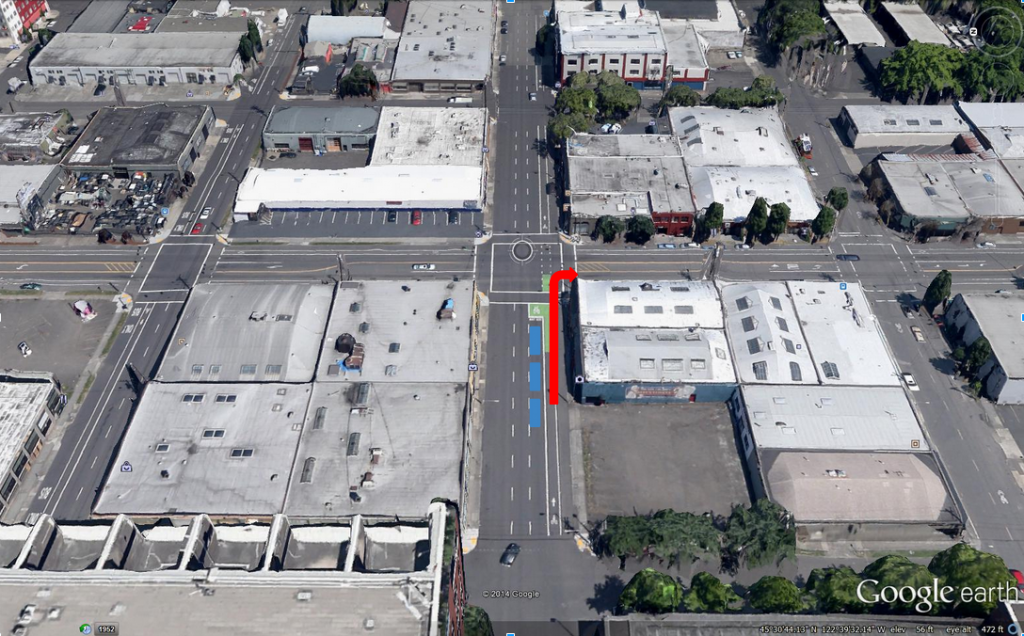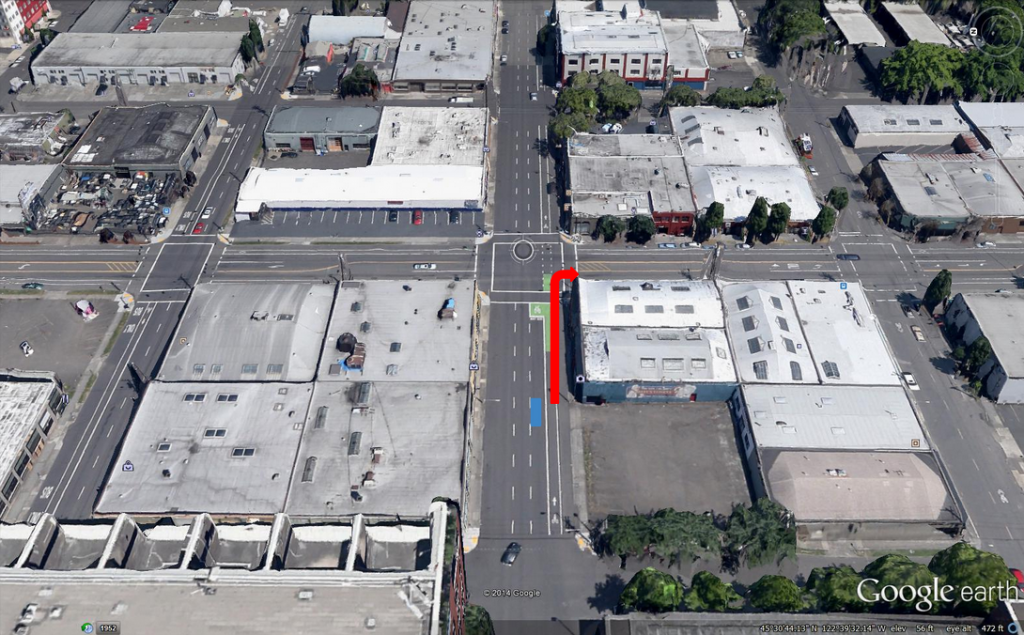Following last week’s post about motor vehicles operating in the bicycle lane, I was asked several questions about motor vehicles stopping or parking in bicycle lanes.
It is not rare to see a car or delivery truck parked in the bicycle lane. If a motor vehicle is parked in the bicycle lane, is it breaking the law? It depends. Under Oregon state law, it is not illegal for a motor vehicle to stop or park in a bicycle lane under certain circumstances. However, many municipal ordinance and city codes, including Portland’s, make stopping on a bicycle lane illegal in most scenarios.
ORS 811.550(23) makes stopping, standing or parking (I’m going to use “stopping” as shorthand) a motor vehicle on a bicycle lane illegal. However, like the law that makes operating a car on the bike lane illegal, this law has many exemptions. 10 of them. Most of the exemptions are obvious:
- Government vehicles performing maintenance or repair work;
- School buses or worker transport buses loading or unloading passengers (provided their yellow flashing lights are engaged);
- Vehicles complying with the direction of a police officer or traffic control device;
- Vehicles operated by the Oregon Department of Fish and Wildlife stopped in order to release fish; or
- Vehicles stopped to collect solid waste. recycling, or yard debris.
However, there are some circumstances where you would expect that a vehicle stopped in the bicycle lane is violating the law where, in fact, it is not:
- If a vehicle becomes “disabled in such a manner and such an extent that the driver cannot avoid stopping or temporarily leaving the disabled vehicle” in the bicycle lane, no violation of the prohibition has occurred; or
- When a vehicle momentarily stops to allow oncoming traffic to pass before making a turn or momentarily stops in preparation for or while negotiating an exit from the road.
The biggest bike lane blocking culprits, however, are parked delivery trucks and cars double parked temporarily. Despite the hazard they create and the inefficiencies they cause, they may not be breaking Oregon state law.
A vehicle is allowed to stop, stand, or park in the bicycle lane if:
- If the vehicle is momentarily stopped to pick up or discharge a passenger; or
- If the vehicle is momentarily stopped for the purpose of, and while actually engaged in, the loading or unloading of property;
So, the trucks stopped on the bicycle lane to deliver kegs of beer or UPS trucks stopped outside office buildings are not violating state law, so long as they are engaged in the loading or unloading of goods. Same with the taxi cabs outside of the hotels, so long as they are actively picking up or discharging a passenger.
One last exemption stands out for both its vagueness of language and possible reach. (5) of the exemption law reads:
- “When applicable, this subsection exempts vehicles from the prohibitions and penalties when the driver’s disregard of the prohibitions is necessary to avoid conflict with other traffic.” (Emphasis added).
“Conflict with other traffic” is not defined in the statute and has not been defined by the Oregon courts.
Portland’s City Code specifically prohibits stopping on a bicycle lane PCC 16.20.130(u) without the numerous exclusions of the state law, but it does include one exclusion (to all of their parking prohibitions) that exempts vehicles stopped on a bicycle lane to avoid conflict with other traffic.



